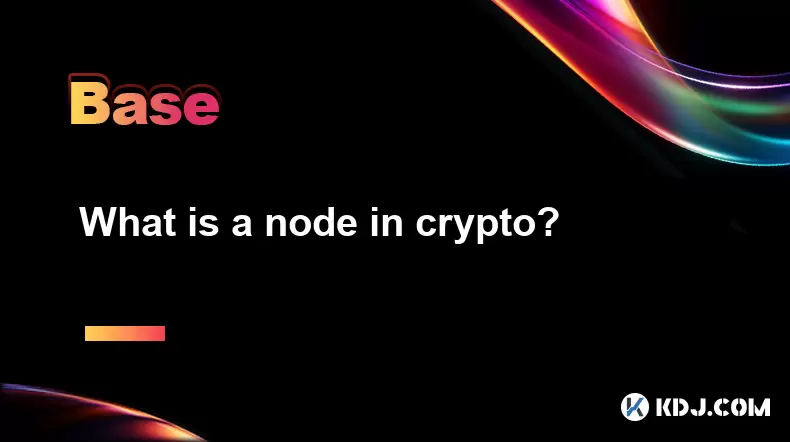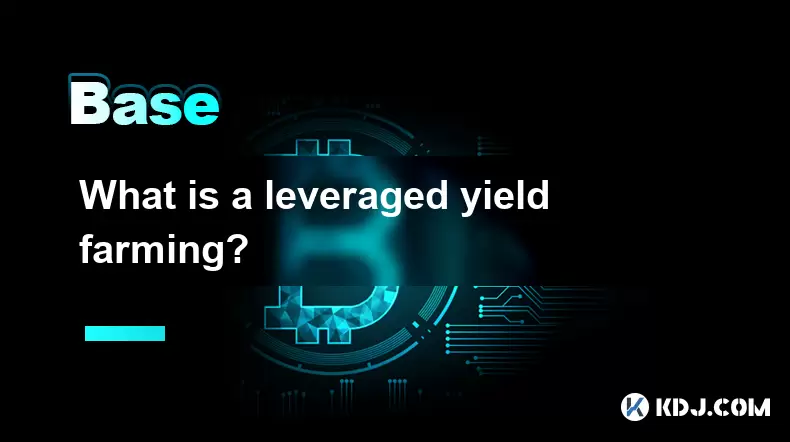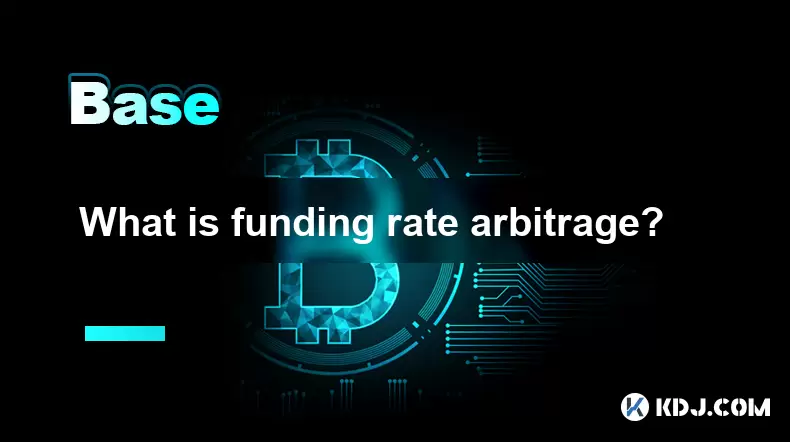-
 Bitcoin
Bitcoin $108,463.3266
-1.47% -
 Ethereum
Ethereum $2,535.8576
-3.62% -
 Tether USDt
Tether USDt $1.0006
0.02% -
 XRP
XRP $2.2352
-2.24% -
 BNB
BNB $658.1049
-0.63% -
 Solana
Solana $149.9207
-2.53% -
 USDC
USDC $0.9998
-0.07% -
 TRON
TRON $0.2857
0.45% -
 Dogecoin
Dogecoin $0.1659
-4.24% -
 Cardano
Cardano $0.5784
-3.85% -
 Hyperliquid
Hyperliquid $38.4944
-4.70% -
 Sui
Sui $2.9107
-4.19% -
 Bitcoin Cash
Bitcoin Cash $485.3637
-3.32% -
 Chainlink
Chainlink $13.3074
-4.18% -
 UNUS SED LEO
UNUS SED LEO $9.0499
0.41% -
 Avalanche
Avalanche $18.0347
-3.98% -
 Stellar
Stellar $0.2394
-2.23% -
 Toncoin
Toncoin $2.8110
-2.68% -
 Shiba Inu
Shiba Inu $0.0...01155
-3.23% -
 Litecoin
Litecoin $87.7967
-3.87% -
 Hedera
Hedera $0.1555
-2.87% -
 Monero
Monero $317.3839
-1.79% -
 Polkadot
Polkadot $3.4144
-4.90% -
 Dai
Dai $1.0000
-0.02% -
 Ethena USDe
Ethena USDe $1.0003
0.00% -
 Bitget Token
Bitget Token $4.4734
-2.29% -
 Uniswap
Uniswap $7.2556
-6.53% -
 Pepe
Pepe $0.0...09693
-7.27% -
 Aave
Aave $267.0924
-4.81% -
 Pi
Pi $0.4834
-3.31%
What is a node in crypto?
A node in cryptocurrency is a decentralized network participant that validates transactions, maintains blockchain integrity, and supports consensus without relying on central authorities.
Jul 04, 2025 at 01:35 pm

Understanding the Role of a Node in Cryptocurrency
In the world of cryptocurrency, a node serves as a foundational element that supports the decentralized nature of blockchain technology. A node is essentially a computer or device connected to a blockchain network that participates in validating and relaying transactions. Unlike centralized systems where a single authority controls data flow, blockchain networks rely on nodes to maintain consensus and ensure transparency across the network.
Each node stores a copy of the entire blockchain, allowing it to independently verify the validity of transactions without relying on third parties. This redundancy ensures that even if some nodes go offline or act maliciously, the network remains secure and functional. Nodes are not just passive storage units; they actively communicate with each other to propagate new blocks and transactions across the network.
Nodes play a critical role in maintaining decentralization, security, and transparency within a blockchain ecosystem.
Different Types of Nodes in Blockchain Networks
Not all nodes function the same way across different blockchain platforms. There are several types of nodes, each serving distinct purposes while contributing to the overall health of the network.
- Full Nodes: These nodes store the complete history of the blockchain and validate every transaction from the genesis block onward. They enforce consensus rules and relay valid transactions to other nodes.
- Lightweight (SPV) Nodes: Simplified Payment Verification (SPV) nodes do not download the entire blockchain. Instead, they only download block headers to verify transactions, making them suitable for devices with limited storage and bandwidth.
- Mining Nodes: In proof-of-work (PoW) blockchains, mining nodes perform computational work to validate transactions and create new blocks. These nodes often run alongside full nodes to ensure adherence to consensus rules.
- Staking Nodes: Found in proof-of-stake (PoS) networks, staking nodes participate in block validation by locking up a certain amount of cryptocurrency as collateral. Validators are chosen based on their stake and are responsible for confirming transactions.
- Authority Nodes: Used primarily in private or permissioned blockchains, these nodes have special privileges to validate transactions and may be operated by trusted entities.
The type of node used depends on the blockchain's consensus mechanism and the user's technical capabilities and goals.
How Do Nodes Validate Transactions?
Transaction validation is one of the core responsibilities of nodes in a blockchain network. When a user initiates a transaction, it is broadcast to the network and picked up by nodes. Each node checks whether the transaction complies with the network's rules before forwarding it to other nodes.
Here’s how the validation process typically works:
- Signature Verification: Nodes check digital signatures to ensure the sender has authorized the transaction and owns the funds being transferred.
- Double-Spending Check: Nodes verify that the inputs referenced in the transaction haven't already been spent in another transaction.
- Script Validation: Smart contracts and script-based conditions must be satisfied for a transaction to be considered valid.
- Consensus Rule Enforcement: Nodes ensure that the transaction adheres to the specific rules defined by the blockchain protocol, such as block size limits and transaction fees.
Only after passing these checks will a transaction be added to a candidate block and propagated further through the network.
Setting Up Your Own Node: A Step-by-Step Guide
Running your own node can provide greater control over your cryptocurrency interactions and contribute to the decentralization of the network. Below is a detailed guide to setting up a basic full node for a common blockchain like Bitcoin:
- Choose a Suitable Device: Ensure you have a machine with sufficient storage (at least 400GB for Bitcoin), RAM (minimum 2GB), and a stable internet connection.
- Download the Core Software: Visit the official website of the cryptocurrency (e.g., bitcoincore.org) and download the appropriate version for your operating system.
- Install the Software: Follow the installation prompts. During setup, choose a custom installation path if you're using an external drive or have limited space on your main drive.
- Configure Settings: Open the configuration file (bitcoin.conf) and adjust settings such as
rpcuser,rpcpassword, anddaemon=1for background operation. - Start the Node: Launch the software and allow it to sync with the network. This initial synchronization can take several days depending on your hardware and bandwidth.
- Verify Sync Completion: Once fully synced, your node will begin validating transactions and participating in the network.
A properly configured node enhances privacy, security, and trustlessness when interacting with the blockchain.
The Importance of Running a Node for Network Health
Operating a node is more than just a technical exercise; it plays a crucial role in maintaining the integrity and resilience of the blockchain network. By running a node, users help distribute the ledger across multiple points, reducing centralization risks and enhancing censorship resistance.
When more individuals operate full nodes, the network becomes more robust against attacks and manipulation. It also allows users to interact directly with the blockchain without relying on third-party services, which could introduce vulnerabilities or compromise privacy.
Additionally, nodes contribute to faster transaction propagation and improved network efficiency. Without enough nodes, congestion can occur, leading to slower confirmations and higher fees.
Every individual running a node contributes to a stronger, more decentralized financial infrastructure.
Frequently Asked Questions About Crypto Nodes
What happens if I stop running my node?
If you shut down your node, it will no longer participate in transaction validation or block propagation. However, this does not affect your stored cryptocurrency balance. Other nodes will continue to operate normally, but the network loses one point of decentralization.
Can running a node earn me cryptocurrency rewards?
Generally, simply running a full node does not provide direct monetary rewards. However, in some networks, staking or masternode configurations may offer incentives for participation.
Is it safe to run a node at home?
Yes, running a node is safe as long as you follow best practices for cybersecurity. Ensure your device is updated, use strong passwords, and consider enabling a firewall to protect your node from unauthorized access.
Do all cryptocurrencies require nodes?
All blockchain-based cryptocurrencies rely on nodes in some form. However, the number of nodes and their roles may vary depending on the network architecture and consensus mechanism.
Disclaimer:info@kdj.com
The information provided is not trading advice. kdj.com does not assume any responsibility for any investments made based on the information provided in this article. Cryptocurrencies are highly volatile and it is highly recommended that you invest with caution after thorough research!
If you believe that the content used on this website infringes your copyright, please contact us immediately (info@kdj.com) and we will delete it promptly.
- Bitcoin's Pattern Break: Are HODLers the Key to the Next Surge?
- 2025-07-04 18:50:12
- Bitcoin Price, Trump's Bill, and the $150K Dream: A NYC Take
- 2025-07-04 19:50:12
- Ethereum, LILPEPE, and the July Bounce: Will Pepe Steal ETH's Thunder?
- 2025-07-04 19:10:12
- Binance Institutional Loans: Unlocking 4x Leverage and Zero Interest for Whales
- 2025-07-04 19:15:12
- Bitcoin Bull Run: Analysts Eye Peak in Late 2025?
- 2025-07-04 19:20:13
- Pepe Indicators, Bullish Forecast: Can the Meme Coin Rally?
- 2025-07-04 19:25:12
Related knowledge

What is a user-generated content (UGC) NFT platform?
Jul 04,2025 at 01:49pm
Understanding the Concept of a UGC NFT PlatformA user-generated content (UGC) NFT platform is a digital marketplace or ecosystem where users can create, mint, and trade non-fungible tokens (NFTs) that represent ownership of original digital content they produce. Unlike traditional NFT platforms where creators often include professional artists or develo...

What is a token generation event (TGE)?
Jul 04,2025 at 07:14am
Understanding the Basics of a Token Generation Event (TGE)A Token Generation Event (TGE) refers to the process through which a blockchain project creates and distributes its native tokens to investors, participants, or stakeholders. This event is often associated with new cryptocurrency projects launching on platforms like Ethereum, Binance Smart Chain,...

What is a block explorer API?
Jul 04,2025 at 05:07am
Understanding the Role of a Block Explorer APIA block explorer API is a crucial interface that enables developers and users to interact programmatically with blockchain data. Unlike traditional APIs used in web services, a block explorer API specifically provides access to blockchain-related information such as transaction details, wallet balances, bloc...

What is a leveraged yield farming?
Jul 04,2025 at 09:36am
Understanding Leveraged Yield FarmingLeveraged yield farming is a more advanced form of yield farming, which itself is a popular method in the decentralized finance (DeFi) ecosystem to earn returns by providing liquidity to various protocols. In traditional yield farming, users deposit tokens into a DeFi platform and earn rewards in return, often in the...

What is open interest in derivatives?
Jul 03,2025 at 02:49pm
Understanding Open Interest in DerivativesOpen interest is a critical metric used in the cryptocurrency derivatives market, particularly when analyzing futures and options contracts. It represents the total number of outstanding contracts that have not been settled or closed by either party involved. Unlike trading volume, which counts all trades made i...

What is funding rate arbitrage?
Jul 04,2025 at 11:43am
Understanding Funding Rate Arbitrage in the Cryptocurrency MarketFunding rate arbitrage is a trading strategy employed by crypto traders to exploit differences in funding rates across various perpetual futures exchanges. In perpetual contracts, funding rates are periodic payments made between long and short traders depending on whether the price of the ...

What is a user-generated content (UGC) NFT platform?
Jul 04,2025 at 01:49pm
Understanding the Concept of a UGC NFT PlatformA user-generated content (UGC) NFT platform is a digital marketplace or ecosystem where users can create, mint, and trade non-fungible tokens (NFTs) that represent ownership of original digital content they produce. Unlike traditional NFT platforms where creators often include professional artists or develo...

What is a token generation event (TGE)?
Jul 04,2025 at 07:14am
Understanding the Basics of a Token Generation Event (TGE)A Token Generation Event (TGE) refers to the process through which a blockchain project creates and distributes its native tokens to investors, participants, or stakeholders. This event is often associated with new cryptocurrency projects launching on platforms like Ethereum, Binance Smart Chain,...

What is a block explorer API?
Jul 04,2025 at 05:07am
Understanding the Role of a Block Explorer APIA block explorer API is a crucial interface that enables developers and users to interact programmatically with blockchain data. Unlike traditional APIs used in web services, a block explorer API specifically provides access to blockchain-related information such as transaction details, wallet balances, bloc...

What is a leveraged yield farming?
Jul 04,2025 at 09:36am
Understanding Leveraged Yield FarmingLeveraged yield farming is a more advanced form of yield farming, which itself is a popular method in the decentralized finance (DeFi) ecosystem to earn returns by providing liquidity to various protocols. In traditional yield farming, users deposit tokens into a DeFi platform and earn rewards in return, often in the...

What is open interest in derivatives?
Jul 03,2025 at 02:49pm
Understanding Open Interest in DerivativesOpen interest is a critical metric used in the cryptocurrency derivatives market, particularly when analyzing futures and options contracts. It represents the total number of outstanding contracts that have not been settled or closed by either party involved. Unlike trading volume, which counts all trades made i...

What is funding rate arbitrage?
Jul 04,2025 at 11:43am
Understanding Funding Rate Arbitrage in the Cryptocurrency MarketFunding rate arbitrage is a trading strategy employed by crypto traders to exploit differences in funding rates across various perpetual futures exchanges. In perpetual contracts, funding rates are periodic payments made between long and short traders depending on whether the price of the ...
See all articles

























































































